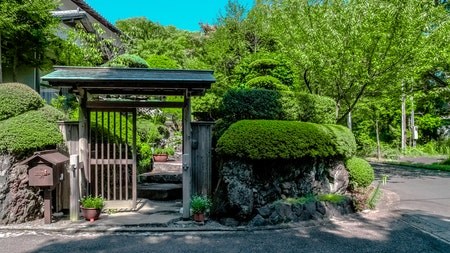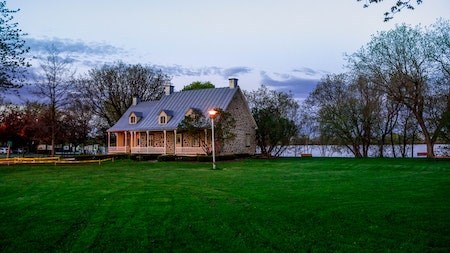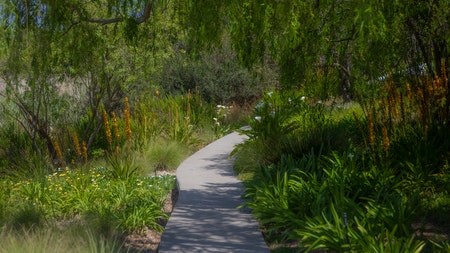All around South Africa, February is the hottest month of the year, and your swimming pool and the beach seem more inviting than ever.
You need to spend time in your garden during this time of the year. According to www.lifeisagarden.co.za/ it’s the best time to take soft cuttings, sow the first crop of winter vegetables and spring-flowering annuals in trays.
Gauteng
It is best to keep azaleas and camellias well watered to ensure a good show of flowers in winter and spring. To promote blooms, feed with 5:1:5 or 3:1:5 fertiliser. Mulch with bark chips to create acid soil.
With sweet peas, the key to success is enriched and well-draining soil. Dig a trench and prepare it with well-rotted kraal manure and plenty of compost, bonemeal and organic fertiliser. Before sowing the seeds directly in the trench, soak them in hot water overnight.
Lawns should be mowed frequently with the blades set on high. Water deeply once a week if you haven’t had rain and feed with a balanced fertiliser to keep the lawn lush and actively growing. Keep an eye out for mole crickets, ants and harvester termites.
Free State
Don’t be tempted to plant out winter annuals too early as the seedlings dislike the heat. Instead, you can start sowing them in seedling trays as they need a bit of time to grow before being planted out. Good choices include cinerarias, gazanias, Iceland poppies, primulas, violas, pansies, larkspurs, Canterbury bells, columbines, sweet Williams and aquilegias.
Plant another batch of marigolds, petunias, or vincas for added instant colour.
If the heat is unbearable, replant your containers with permanent focal plants. Nurseries have a wide selection of agaves, tree aloes, Japanese cycads, flaxes and cordylines.
For the veggie garden, plant bush beans for one last harvest before winter.
Limpopo
While enduring the February heat, think indigenous and tough, so plant more buddleja, plumbago and freylinia. Carissa green carpet makes an excellent low hedge, and geraniums and arctotis add a pop of colour.
Fill gaps in shady areas with bright Plectranthus ciliates Sasha.
Use an organic insecticide to drench wood termites.
Mpumalanga
Dianthus and gazanias are tough annuals that fill gaps and provide colour for many months. Also, add day lilies and agapanthus in purple, deep blue, and bi-coloured blooms.
In the veggie garden, this is the time to establish berries like raspberries, blackberries, blueberries, and pomegranates.
Use a 3:1:5 SR fertiliser to feed tropical fruit like litchis, pawpaws and pineapples.
Every garden should have a lemon tree. Life is a Garden recommends the Eureka variety – a generous, smooth skin variety that is also suitable for growing in containers.
Eastern Cape
Fuchsias need to be kept cool and well-watered to survive summer. Check for red spider mites regularly.
Roses must be kept well watered, fed and sprayed weekly to ward off diseases and pests.
Evergreen hedges must be pruned to keep them in shape. Lavenders can be neatened with a light trim. Deadhead annuals and perennials so that they can keep on flowering.
Encourage fresh new growth by cutting back herbs. You can freeze or dry the snippets of summer herbs for use during winter.
Pinch out surplus squashes and tomatoes to get more giant vegetables.
Ensure a good crop by feeding fruiting plants such as peppers, tomatoes, eggplants and cucumbers.
Sow spinach, chillies, globe artichokes, parsley, carrots, radish and rocket.
KwaZulu-Natal
Summer-flowering annuals that are coming to the end of their flowering season now need to be removed. Collect the ripe seeds for the next season and start preparing your flower and seed beds for autumn.
Spread a general fertiliser on the whole garden, especially around larger shrubs that often have a growth spurt in autumn. Perennial salvias thrive in the heat and make a spectacular display in autumn. Make sure they are well-fed to give their best.
Prune summer-flowering climbing and rambling roses.
Take soft-wooded herbs and shrubs cuttings.
Keep ponds neat and clean. Trim back overgrown plants.
Check cucumbers, marrows and pumpkins for mildew – prevent rotting by raising them off the ground. In the cooler climates, sow early crops of peas and broad beans. Continue planting regular crops of quick herbs like rocket and coriander.
Nuts (chestnuts, pecans, and walnuts) start falling and need to be collected or harvested.
Dispose of fruit found on the ground by burying it.
Western Cape
You can encourage a late autumn flush for a garden of petunias by cutting them back. Replace other tired bedding plants with marigolds, portulacas, salvias and vincas.
More beauties to include are Plumbago auriculata Cape Dark Blue and Tecoma capensis Apricot (Cape honeysuckle). Many Erica’s are in season flowers and indigenous salvias like Salvia chamelaeagnea Blue.
Veggies and herds to plant and sow include cabbages, cauliflower, celery, coriander, flat-leaf parsley, oriental vegetables, sweet basil, and nasturtiums. Plant more bush beans, beetroot, carrots, lettuce, onions, spinach and Swiss chard.
Deciduous fruit trees should be fed once the harvest is over and renew the mulch around their roots.
All regions
Remember not to go out in the garden without a hat, sunblock and a bottle of water close by.
And don’t allow any weeds to get to the seed. Your back will thank you later.





